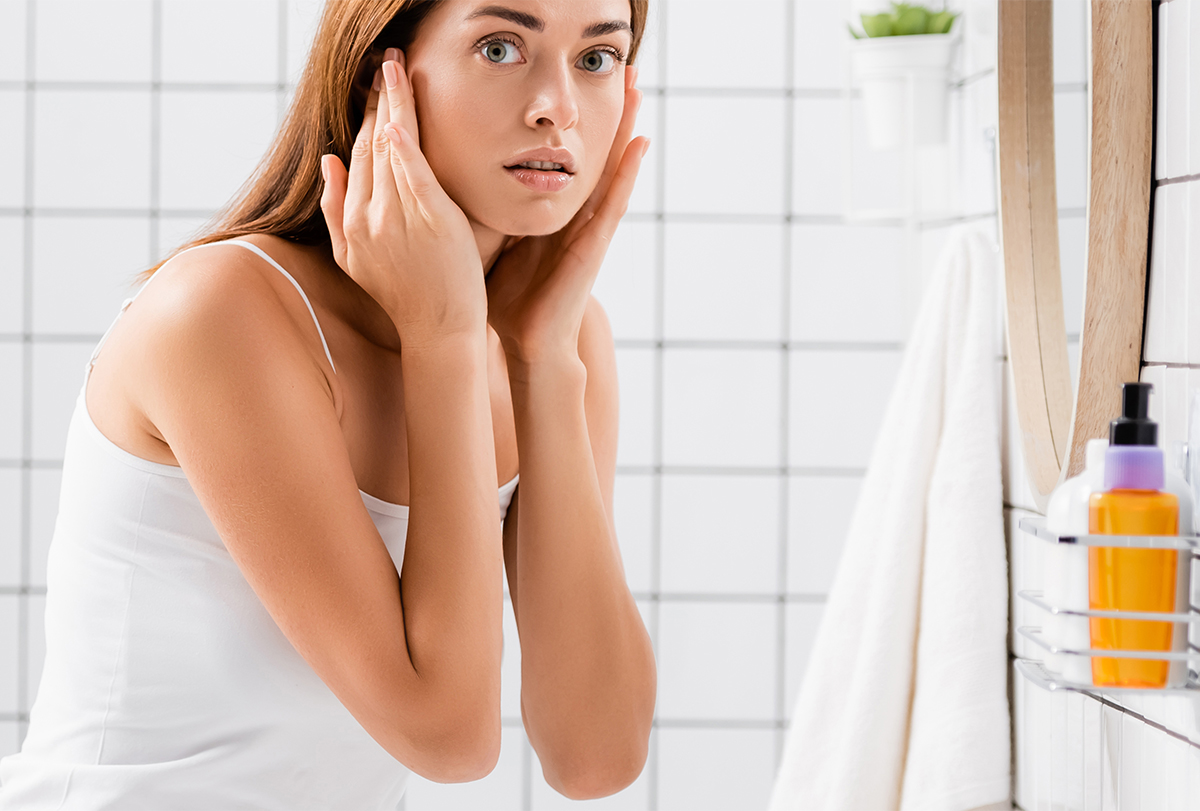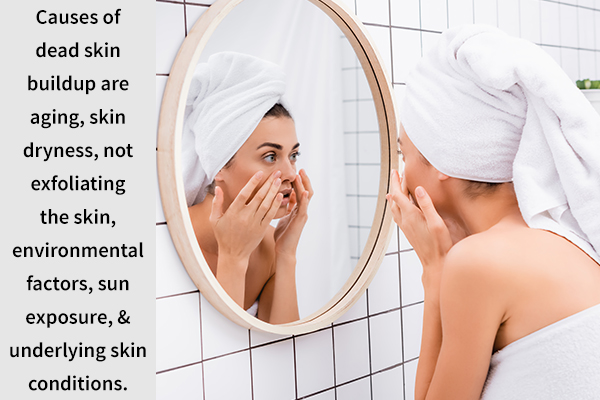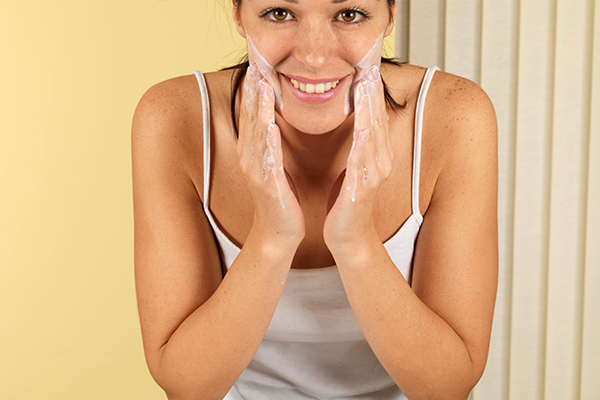In this article:
The skin is the body’s largest organ and is made up of trillions of cells. Since the skin is exposed to the outside environment, the body continuously replaces old skin cells with new ones at an approximate rate of 30,000–40,000 cells per minute. (1) This adds up to a million cells being shed each day.

These dead skin cells can accumulate on the surface of the skin, causing it to appear dull. The accumulation of dead skin cells can also clog the skin pores, leading to the development of acne.
Therefore, it is vital to exfoliate the skin to help remove the dead skin cell layers and reveal fresh, radiant skin underneath.
Process of Dead Skin Cell Removal
The skin is made up of various layers of skin cells known as keratinocytes. These keratinocytes are chiefly composed of the protein keratin and are produced in the epidermis. (2)
As a cell ages, it travels upward toward the dermis and stratum corneum (outermost skin layer). Once the cell reaches the outermost layer, it dies to complete its life cycle through a process known as desquamation.
Causes of Dead Skin Cells

Several factors can influence the death of skin cells, including:
1. Aging
Aging is one of the most common reasons for dead skin cells to pile up. As you age, your skin cells lose the capacity to regenerate as quickly, leading to the accumulation of dead skin cells on the surface. (3)
ALSO READ: Signs of Skin Aging and How to Fix Them
2. Skin dryness
A lack of moisture in the skin cells can increase the rate of cell death, leading to an increased production of dead skin cells on the surface. Skin dryness may result from medical problems, dehydration, not moisturizing, etc.
3. Not exfoliating the skin
Exfoliation is an important step of any skin care routine. Not exfoliating the skin at least twice a week allows the dead skin cells to remain on the skin surface.
Moreover, irregular exfoliation can cause clogging of the skin pores with oil, dirt, and makeup residue, which hinders the shedding of old skin cells and the production of new ones.
4. Environmental factors
Since the skin is regularly exposed to the environment, it can largely influence skin health. Dry skin is common in arid, cold, and dry climates. A lack of humidity in the atmosphere can dry up the skin and trap the dead skin cells.
5. Sun exposure
Excessive exposure to sunlight can cause skin dryness, leading to the formation of dead skin cells. (4)
6. Underlying skin conditions
A severe problem of dead skin cell accumulation can be a symptom of different skin conditions that warrant medical attention, including eczema and psoriasis. (2)
Signs and Symptoms of Dead Skin Cell Accumulation
Dry and dead skin may be associated with the following symptoms:
- Small scales
- Fine lines
- Flakiness
- Deep cracks
- Dry patches
- Premature signs of aging
Standard Treatment for Dead Skin Cell Accumulation

The accumulation of dead skin cells can be easily treated with regular exfoliation. However, if your condition is severe, you may need to undergo medical exfoliation to help remove the dead skin cells.
You may consult your doctor for the following treatment methods:
1. Exfoliating creams and ointments
Prescription-strength ointments and creams can help remove the dead skin cell layer without rubbing the skin with a scrub. These creams commonly contain glycolic acid, salicylic acid, and lipohydroxy acid. (5)
2. Chemical peels
This intervention involves applying a layer of chemical solution over the skin to loosen the dead cells for quick and easy exfoliation. The removal of the uppermost layers stimulates the production of new skin cells, which rise to the surface to form fresh skin.
Chemical peels are performed using different alpha and beta hydroxy acids according to the skin condition. Lactic acid is used to treat dehydration and sun damage, while salicylic acid is employed to control acne.
3. Dermaplaning
This treatment method involves the use of an exfoliation blade to help remove all the dead skin cell layers instead of only acting on the surface. This helps rejuvenate the skin and make it bright and smooth.
Dermaplaning is considered safer than peels as some individuals may be highly sensitive to the chemicals used for peels. (6)(7)
4. Microdermabrasion
This deep-exfoliation procedure uses specialized tools to remove the dead cells from the surface of the skin. The topical stimulation and exfoliation also promote the production of collagen and elastin below the epidermal surface to make the skin smooth, firm, radiant, and supple.
All in all, microdermabrasion facilitates speedy skin renewal that evens out your complexion, shrinks pores, and reduces the appearance of fine lines and wrinkles.
5. Mesotherapy
This procedure entails injecting bleaching and anti-aging substances directly into the skin for better and faster results with lesser downtime. Once injected, the product works immediately to stimulate skin regeneration.
The old, damaged skin layers are replaced by fresh layers from underneath. This gives a healthy glow to your skin, helps reverse sun damage, and reduces the appearance of fine lines and wrinkles.
6. Skin electroporation
Electroporation refers to “noninjectable mesotherapy,” which is mainly used to facilitate the absorption of chemical peels deep into the skin cells for better results.
The skin is exposed to a light electrical field, which weakens the cellular walls to allow the chemical peel solution to enter and be absorbed inside the skin cells. This treatment can rejuvenate, tighten, brighten, and smoothen your skin without any pain or the risk of side effects.
Diagnosing the Cause of Dead Skin Cell Accumulation
A problem of dead skin cell buildup can be easily diagnosed with a physical examination and noting the characteristics of the scales. The doctor may also order other tests, such as a skin biopsy, to rule out other causes of dry skin.
When to See a Doctor

It is advised to consult a dermatologist if you experience dead skin accumulation along with any of the following symptoms:
- Severe itching
- Redness
- Prolonged skin dryness
Final Word
A radiant, smooth skin is something everyone desires, but many factors can make the skin look dull, with dead skin cell accumulation being one of the most common causes.
The most effective and easiest way to help manage dead skin cell accumulation is regular exfoliation. Exfoliating the skin once or twice a week helps reveal the new skin underneath, making it appear smooth and radiant.
However, if the problem persists, you must consult a doctor, as the accumulation of dead skin cells can compromise the general health of your skin.

- Was this article helpful?
- YES, THANKS!NOT REALLY


